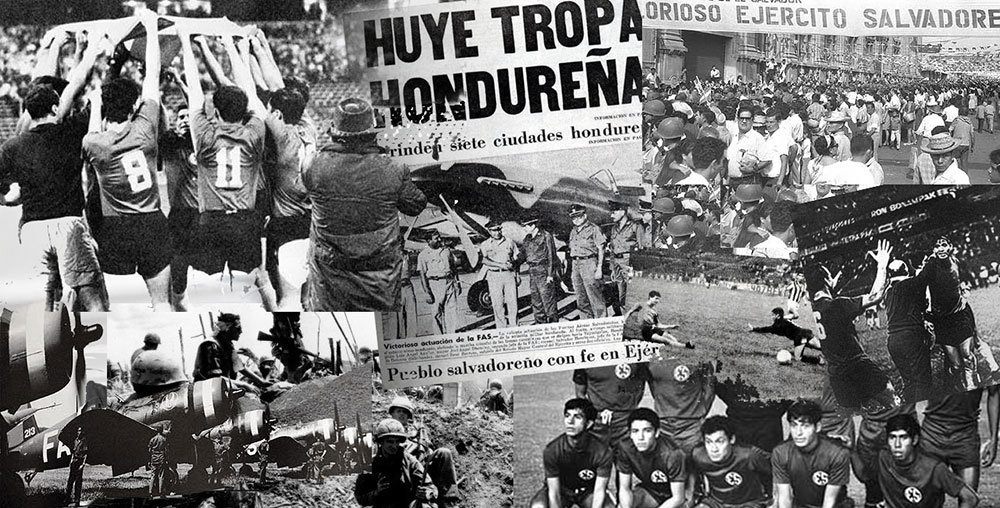When Soccer Triggered An Armed Conflict
Honduras and El Salvador go to war after a series of soccer matches
Soccer violence on and off the field is universal like the game itself, but in 1969 the world’s most popular sport triggered an actual war between two countries. Though the tensions between El Salvador and Honduras were historically rooted, it was a series of World Cup qualifiers that finally sent the central American nations into armed conflict.
In June, 1969, Honduras and El Salvador met in a two-leg qualifier for the 1970 FIFA World Cup. The first match took place in Tegucigalpa, capital of Honduras. The visiting team arrived on June 8th and spent a sleepless night in their hotel after local fans kept them up with hostile chants, car horns and firecrackers. The next day, the hosts won the game 1-0.
Colombian Soccer & the Drug Lords
A week later, it was the Honduran squad that endured fan rancor when the second match moved to El Salvador. The violence was even more pronounced as local supporters broke the hotel’s windows, threw rotten eggs, dead rats, and stinking rags. At game time, the Honduran players were forced to be transported to the stadium in armored vehicles, which also whisked them away to the airport after they lost the faceoff 3-0.
Events turned deadly at the border when two visiting fans from Honduras were beaten and killed, scores were hospitalized, and a hundred and fifty cars were burned. For a few hours, officials closed the frontier between the two countries.
Brewing at the surface was more than just soccer passion and national pride. For generations, El Salvador and neighboring Honduras struggled with issues of demographics and land reform. More than five times the size of El Salvador, Honduras was home to 300,000 Salvadoran immigrants who made up 20% of its population.
In the early 1960’s, newly-enacted land reforms stripped away the rights of Salvadoran squatters and granted Honduran citizens property that was both legally and illegally occupied by foreigners. By the end of the decade, thousands of Salvadoran laborers, migrants, and long-term settlers were expelled from the country.
Tensions boiled over as the 1970 World Cup approached. Two years earlier, El Salvador qualified for the Olympic Games in Mexico City for the first time. For a variety of reasons, mostly due to travel costs, the country had never bothered participating in a World Cup qualification.
Similarly, Honduras had never been to the World Cup even though it joined FIFA in 1946. But the quadrennial event had now arrived to North America for the first time and after Mexico received automatic entry as host, only one other slot was open in the group.
The battle lines were drawn to see which of the regional national teams would head to the Cup. In the early rounds of those matches, El Salvador defeated Guyana and the Netherland Antilles, while Honduras dispatched Costa Rica and Jamaica. The border foes were now facing each other.
After playing two matches to a 1-1 tie in their respective turfs, the third game in the series moved to neutral grounds in Mexico City on June 27, 1969. Running the pitch under the watch of 1,700 police officers at the stadium, El Salvador prevailed 3-2 in overtime. They would move on to face Haiti, while Honduras was out of contention.
Following the game and on the same day, despite spirited handshakes and embraces between the opposing players, the winning team’s government back home broke diplomatic relations with its counterpart. El Salvador claimed that 11,700 Salvadorans were recently chased out of Honduras in an atmosphere of intense violence with no protection or compensation.
As the problems next door worstened, El Salvador resorted to military action on July 14, 1969 by launching air raids and a ground invasion into Honduras. The conflict lasted 100 hours before the Organization of American States (“OAS”) was called in to intervene and force a cease fire.
Remembering the 1970 Boys from Brazil
Fought mostly on Honduran soil, the “Soccer War” was responsible for an estimated 900 civilian deaths on the Salvadoran side and over 2,000 in the Honduran camp. In addition, several hundred thousand people were displaced, exacerbating the social and economic conditions of both countries.
In October, El Salvador went on to overtake Haiti for a berth in Mexico City the following summer. While the troubled Central American nation ended up at the bottom of Group A in the opening rounds of the Games, it was their first time qualifying and first time making the Cup.
IF YOU ENJOY OUR CONTENT, PLEASE CONSIDER A VOLUNTARY DONATION TO SUPPORT OUR WRITING & JOURNALISTIC EFFORTS.










